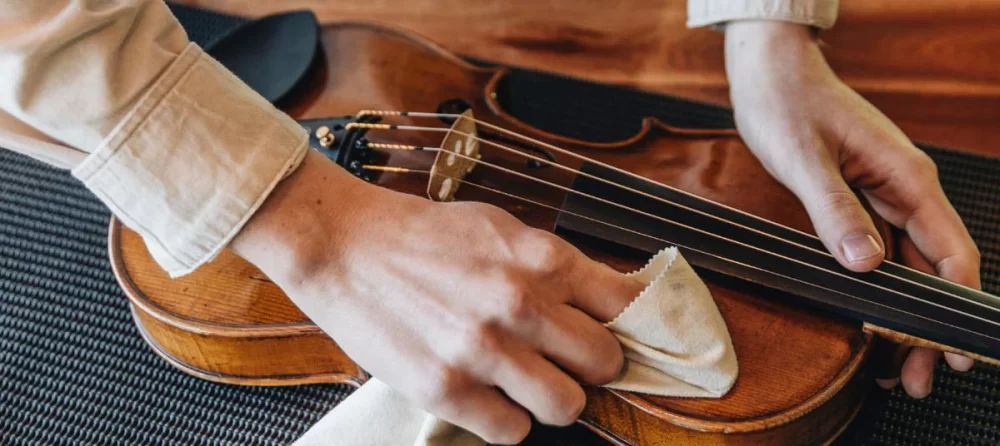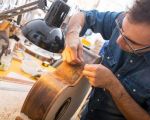
How to Keep Your Violin Bow in Perfect Shape: A Guide for Musicians
As a violinist, one of the most important aspects of playing your instrument is ensuring that your violin bow is in top condition. Whether you're a seasoned performer or just starting out, knowing how to maintain your violin bow is key to producing the best sound and preserving the longevity of your instrument. I’ve learned a lot over the years about violin bow care, and I’d like to share my tips with you. So, let's dive into the world of bow maintenance!
1. Cleaning Your Violin Bow Regularly
First and foremost, it's essential to clean your bow after each playing session. Just like the violin itself, your bow needs regular cleaning to remove rosin buildup, dust, and oils from your fingers. Here’s how I do it:
- Use a soft cloth: I always keep a soft, lint-free cloth handy. After each practice, I gently wipe down the bow, making sure to remove any excess rosin from the hair and stick.
- Clean the stick carefully: It’s easy to forget the stick, but it’s just as important. I use a slightly dampened cloth to wipe the stick, especially around the frog area, where oils from my hand tend to accumulate.
- Rosin buildup: If there's a noticeable amount of rosin on the bow hair, I use a specialized bow cleaning cloth or a soft brush to gently clean it off. I avoid using excessive moisture as it can damage the bow's finish.
2. Re-hairing Your Violin Bow
After regular use, the bow hair will eventually wear down, lose its grip, or become uneven. Re-hairing your violin bow is something I do at least once a year, but it depends on how often you play. Here’s what I’ve learned about the re-hairing process:
- When to re-hair: The hair on your bow should be replaced when it begins to look worn out, loses its ability to grip the strings, or becomes too dirty to clean effectively.
- Choosing the right bow hair: There are different types of bow hair, and the quality can significantly impact your playing. I always make sure to choose high-quality, horsehair for my bow. Synthetic hair is also an option, but I personally prefer natural hair for its durability and playability.
- How often to re-hair: Depending on how frequently you play, the bow might need re-hairing every 6 months to a year. I noticed a difference in sound quality after I re-haired my bow, which made it a worthwhile investment.
3. Proper Tension and Use of the Bow
Adjusting the tension of your violin bow is a crucial part of maintaining it. If the bow tension is too tight, it could put unnecessary stress on the hair, leading to breakage. On the other hand, if the tension is too loose, it may cause the bow to lose its shape. Here’s how I manage the bow tension:
- Loosen the bow after playing: I always loosen the bow slightly after playing. This prevents the hair from stretching out too much over time. It also helps maintain the bow’s shape.
- Adjusting the tension: When I need to tighten the bow, I do so gradually, using the screw at the end of the frog. The bow should feel firm but not over-tightened. I’ve found that this balance gives me the best control and sound quality.
4. Storing Your Violin Bow Correctly
Where and how you store your violin bow can make a big difference in its lifespan. I’ve learned over the years that proper storage is crucial in preventing damage. Here are my tips:
- Use a bow case: Always store your violin bow in a case. A good bow case protects the bow from environmental factors like humidity, temperature fluctuations, and accidental damage.
- Avoid extreme temperatures: I make sure to never leave my bow in areas with extreme heat or cold. Too much heat can cause the bow to warp, while extreme cold can cause the hair to become brittle.
- Store in a dry environment: Humidity is another factor that can affect the bow. I always make sure to store my bow in a dry area. Some musicians even use humidity control pouches in their cases for extra protection.
5. Protecting Your Bow from Accidents
Accidents happen, and I’ve had my fair share of bow mishaps. But learning to protect your bow from physical damage is key to preserving its quality. Here's what I’ve done to minimize the risk:
- Don’t rest your bow on the strings: I used to casually leave my bow resting on the strings, but I’ve learned that it can cause unnecessary wear on both the bow and the violin. Now, I always store it properly in its case or a stand.
- Be mindful of the bow’s tip: The tip of the bow is particularly delicate. I make sure to avoid any rough handling or dropping that could damage the tip, as it can affect both the appearance and performance of the bow.
6. Understanding the Role of Rosin
Rosin plays a big role in how your bow performs, and learning how to apply it correctly is just as important as maintaining the bow itself. I’ve experimented with different types of rosin, and here's what I’ve discovered:
- Choosing the right rosin: There are many types of rosin available, depending on your playing style and the climate you’re in. I prefer a slightly softer rosin during the winter months and a harder rosin during the summer to prevent excess buildup.
- Application: I apply rosin carefully to the bow hair. It’s important not to over-rosin the bow, as this can lead to sticky buildup. A few strokes of rosin usually do the trick, and I make sure to reapply it regularly.
Maintaining your violin bow may seem like a lot of work, but trust me, it’s worth it. With a little care and attention, your bow will serve you for years to come, providing you with better sound and an overall improved playing experience. If you're looking for high-quality violins and accessories, check out our recommendations at Beat Trigger for the best options available.








